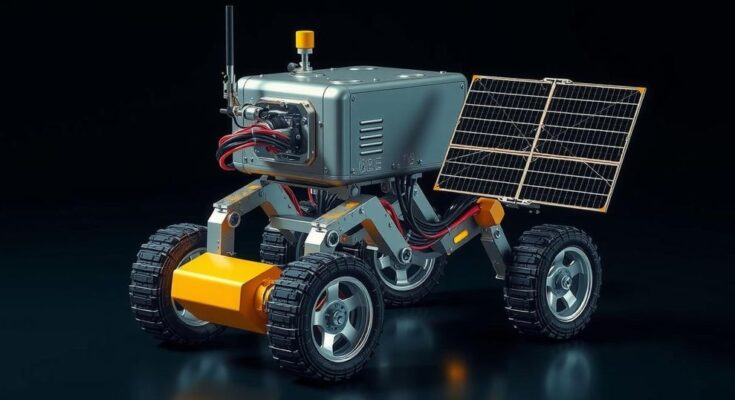The U.S. Naval Research Laboratory has developed a spaceflight-qualified robotics suite capable of servicing satellites in orbit. The Robotic Servicing of Geosynchronous Satellites (RSGS) project, funded by DARPA, aims to enhance satellite operations, potentially reducing costs and extending satellite lifetimes. With successful thermal vacuum tests completed, the technology is set for integration into Northrop Grumman’s spacecraft, anticipating a launch in 2026.
In a groundbreaking achievement, the United States Naval Research Laboratory (NRL), in collaboration with the Defense Advanced Research Projects Agency (DARPA), has unveiled a revolutionary robotics suite specially designed for satellite servicing. This innovative technology, known as the Robotic Servicing of Geosynchronous Satellites (RSGS) Integrated Robotic Payload, recently passed critical thermal vacuum tests, confirming its readiness for orbit operations. By integrating this robotic system into Northrop Grumman’s Mission Robotics Vehicle, the stage is set for a new era of satellite maintenance that offers enhanced operational longevity and efficiency. Leading the way towards transforming satellite operations, NRL’s Director of Research, Bruce Danly, emphasized the significance of this milestone. He remarked, “The recent completion of thermal vacuum testing marks a major milestone toward achieving the program’s goal of demonstrating robotic servicing capabilities on orbit in the near future.” The advanced robotic systems promise not only to drastically reduce servicing costs but also to unlock capabilities previously thought impossible, thus revolutionizing both national security and civilian satellite applications. The potential of RSGS is immense—satellites in geosynchronous orbit, situated about 22,000 miles above Earth, play a critical role in communication and surveillance for both military and civilian purposes. Unfortunately, they currently grapple with in-orbit repair challenges, often strapped with extra systems and fuel to account for potential failures. With NRL’s advancements in robotic servicing, satellites could soon receive timely upgrades, extending their operational lifespan and reducing costs for operators. Glen Henshaw, a senior scientist for Robotics and Autonomous Systems at NRL, aptly pointed out the necessity of adapting to technological advancements: “Satellites are the only expensive equipment we buy that can’t be repaired or upgraded once they are in the field, and this costs the taxpayer money.” The dream is to pioneer robotic repairs and upgrades, providing a new dimension to satellite management that echoes the well-established practices of maintaining aircraft and naval vessels. The recent thermal vacuum testing rigorously assessed the robotic payload under simulated space conditions. All systems were thoroughly evaluated, including operational navigation, camera functionality, and robotic arm deployments. William Vincent, the RSGS program manager at NRL, articulated the mixed emotions surrounding this accomplishment: “Shipping the IRP to Dulles is a bittersweet experience.” With a launch slated for 2026 aboard Northrop Grumman’s MRV spacecraft, NRL’s ambitious plans for robotic space mechanics are set to reshape our approach to satellite infrastructure. These advanced robotic systems could lay the foundation for even larger ventures into space, such as constructing observatories and solar power stations, presenting a future rich with opportunities for innovation and exploration.
The development of satellite-servicing robotics is critical as reliance on satellites for communications and data collection grows. Currently, existing satellites face limitations due to the lack of repair and upgrade capabilities in orbit. Advances in satellite servicing technology promise to address these limitations, significantly impacting both military and civilian sectors by extending the life of high-value assets. Programs like the RSGS aim to integrate robotic systems into existing satellite networks to enhance functionality and reduce associated costs.
The completion of the RSGS Integrated Robotic Payload marks a pivotal moment in satellite technology, ushering in a future where robots can perform essential upgrades and repairs in space. This innovative leap not only promises to extend the operational lifespan of costly satellites but also enhances the strategic capabilities for both military and civilian applications. With the expected launch in 2026, the NRL and its partners are on the brink of fundamentally transforming our approach to space operations.
Original Source: www.defense.gov



